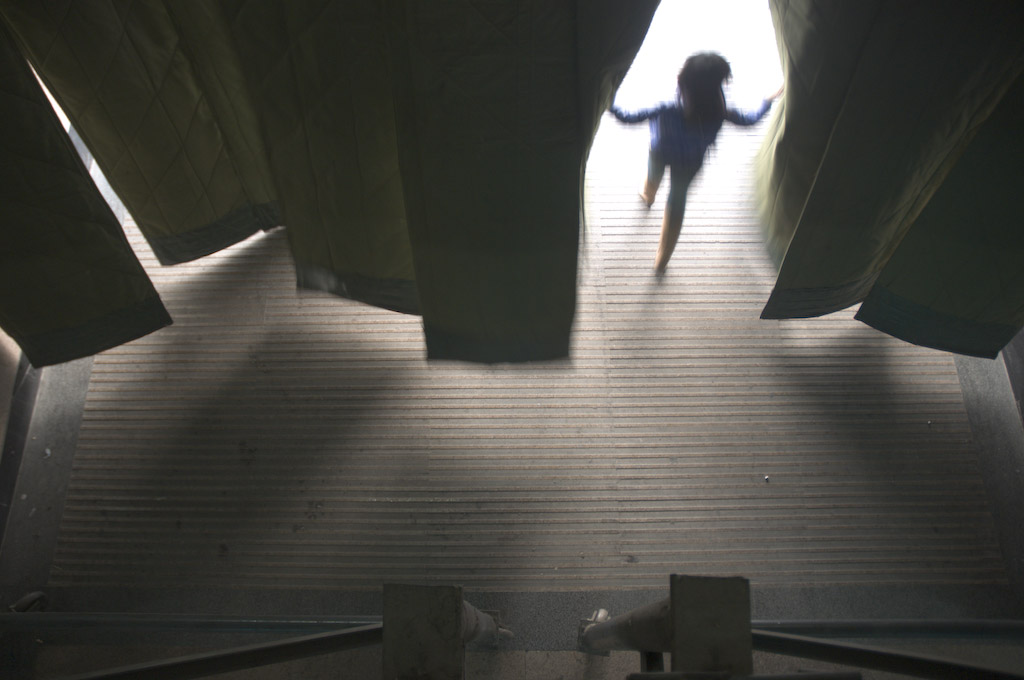A common feature in many Chinese cities is the heavy curtain found at the entrance of department stores and subways, shielding the interior against the bitter winter cold. Designs range from semi-transparent PVC strips, to heavy fabrics, sometimes including push/pull information as you would find on a door. Top three photos from Urumqi and the entrance to Tokyo Midtown below.
For interaction designers. In any given culture the characteristics of common transitions: whether no, one or two hands are needed to pass through; whether objects that are carried shift during the transition; the frequency with which the transitions occur; whether objects attached to clothing is at risk of damage or snagging; the risks associated with the transition such as bumping into someone on the other side; and whether tasks need to be put on hold during the transition?
Considering technology adoption: the cultural differences in the pros and cons of new technologies over the existing solution. For example? Users of Bluetooth headsets not having to interrupt a conversation to negotiate the curtain in a Chinese department store or the same for a US car driver exiting their vehicle. The latter example is particularly interesting because it marks a transition between a semi-private and a public space – creating an opportunity for behaviours that are acceptable in (semi) private (the car) to leak over into the public arena, with the task (talking to a remote person) being the bridge.
For every new product: activities that act as bridges between what is socially acceptable in one space, leaking over to another. Does the increased exposure result in a greater social acceptance?
There was a time when wearing a headphone in public was novel. Bluetooth headsets are a recent invention but with an evolution of styles, cost, and size they have become acceptable in a broad range of contexts. Are we likely to see an explosion of head mounted displays next?



